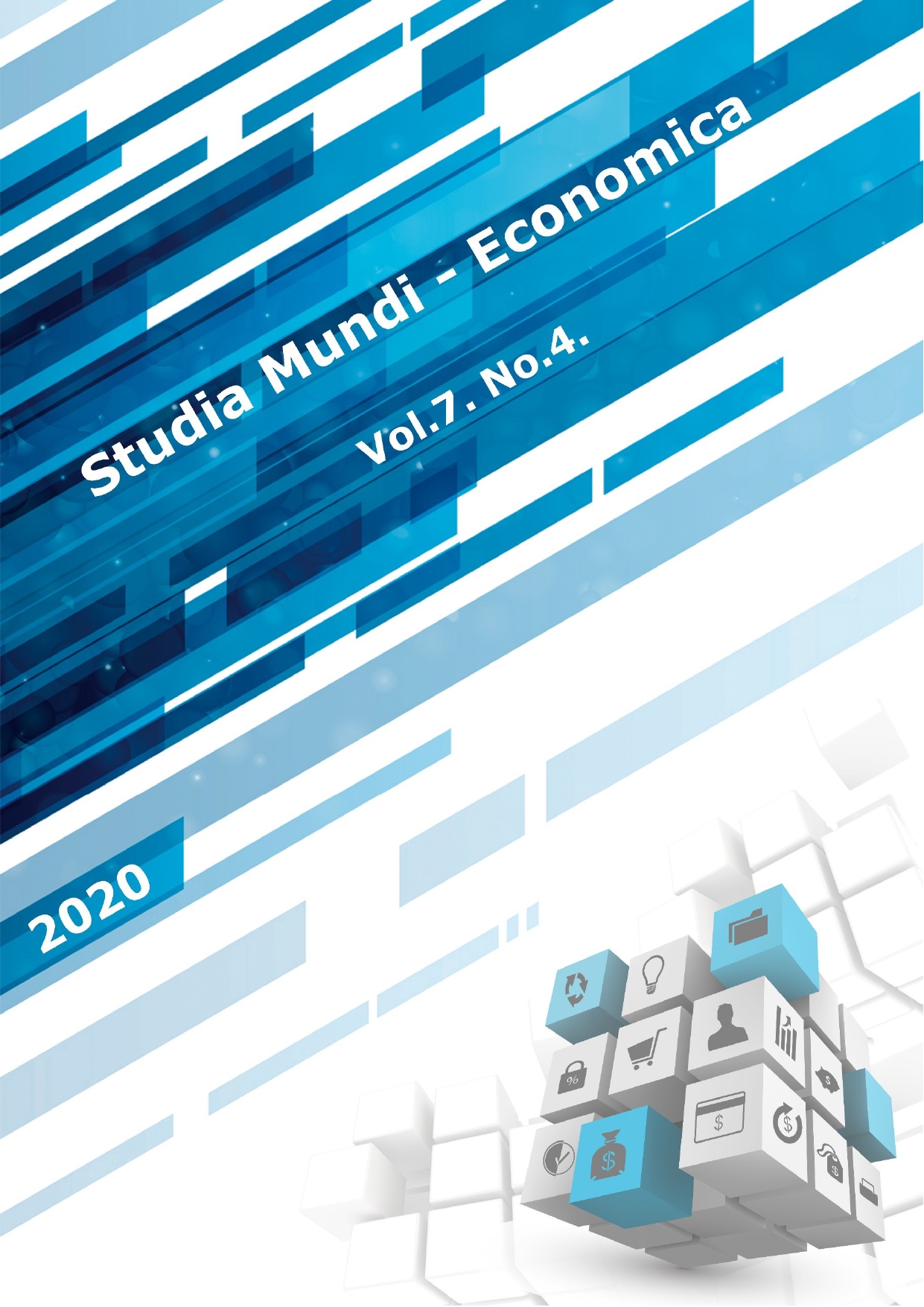The role of agriculture in local development through the example of Körösfő (Romania)
DOI:
https://doi.org/10.18531/Studia.Mundi.2020.07.04.132-143Schlagwörter:
agriculture, local development, rural developmentAbstract
The role of the endogenous resources has been emphasized since a long time by the literature of territorial and rural development. In parallel the role of agriculture in local employment has decreased significantly for the last few decades. The Institute for Regional Economics and Rural Development (IRERD) of the Szent István University Gödöllő regularly makes researches in traditionally farming rural villages to analyze the possible role of agriculture besides such tendencies in local development strategies. The primer sector has had a big importance for centuries in the life of Körösfő (Izvoru Crișului) village located near to Bánffyhunyad (Huedin). At the same time, the general tendencies, growing importance of local handwork industry and the decreasing farming opportunities have affected the settlement’s local economy as well. During a summer research camp in 2017 the role of agriculture as an endogenous competitive factor in long time local development was analyzed in this settlement by a primary research organized by the IRERD. According to the results, the agriculture has lost its previous significant role in the life of Körösfő caused by the changing economy of the village (trade and handwork), the disadvantaged conditions, the unfavourable natural capabilities Summing up the research, the sector could be the basis of creating local development strategy in Körösfő just in a very limited way.
Literaturhinweise
Áldorfai Gy. - Czabadai L. (2014): Helyi válaszok a globális kihívásokra. Acta Carolus Robertus 4 (2) pp. 9-18.
Áldorfai Gy. - Topa Z. - Káposzta J. (2015): The planning of the Hungarian local development strategies by using CLLD approach. Acta Avada (2) pp. 13-22.
Bakos I. M. - Topa Z. (2016): The Contribution of Local Food to Tourism in Hungary. Contemporary Research On Organization Management And Administration 4 (2) pp. 63-74.
Cernea M. (1992) The Building Blocks of Participation. Washington: World Bank
Káposzta, J. (2020): A vidékfejlesztés helye a regionális tudományban, Tér és Társadalom 34 (1) pp. 37-40. DOI: https://doi.org/10.17649/TET.34.1.3235.
Keszi-Harmath S. (1977): Ingázás, vándorlás, szaporulat Kalotaszegen. Korunk XXXVI. (12) pp. 968-974.
Kopasz M. (2005): Multifuncionális mezőgazdaság az EU törekvéseinek összhangjában. A Falu (1) pp. 51-60.
Kulcsár L. (2017): A vidékfejlesztés elméleti megközelítése: regionális és kulturális összefüggések. Kolozsvár: Kriterion
Lowe P. - Murdoch J. - Ward N. (1995): Networks in Rural Development: beyond exogenous and endogenous models. pp. 87-105. In: Ploeg J. D. van der - Dijk G. van (Ed.): Beyond modernisation: The impact of endogenous rural development Assen: Van Gorcum.
Madarász I. (2004): A vidék funkciói az Európai Unióban. A Falu (4) pp. 35-43.
Moseley, M. J. (2003): Rural Development Principles and Practice. London: Sage
Murdoch J. (1995): Sustainable Rural Development: Towards a research agenda. Regional Studies (5) pp. 479-499.
Nagy H. - Tóth T. - Oláh I. (2012): The role of local markets in the sustainable economic development of Hungarian rural areas. Visegrad Journal On Bioeconomy And Sustainable Development 1. (1) pp. 27-31.
Nagyné, M. M. - Lendvay, E. (2018): New method to support decision making process in the local economic development of Hungary. Regional Statistics 8. (2) pp. 69-91.
Nagyné, M. M. (2013): Factors of success in case of local society. Deturope: Central European Journal Of Tourism And Regional Development 5. (3) pp. 63-70.
Némedi-Kollár, K. - Péli, L. - Madár, F. (2016): Covasna county in the mirror of economic, social, environmental factors. pp. 484-492. In: Horská, E. et al. (Eds.): The Agri-Food Value Chain: Challenges for Natural Resources Management and Society: International Scientific Days 2016. Nitra: Slovak University of Agriculture
Oláh I. - Urbánné Malomsoki M. (2016): A kis- és aprófalvas térségek népességének változása hazánkban. pp. 1237-1243. In: Takácsné Gy. K. (szerk.): Innovációs kihívások és lehetőségek 2014-2020 között: XV. Nemzetközi Tudományos Napok. Gyöngyös: Károly Róbert Főiskola
Péntek T. (2014): Körösfő. Honismereti tanulmány. Élő Erdély egyesület. http://diakszemmel.eloerdely.ro/files/6756-099_Pentek_Timea_Korosfo.pdf
Ploeg, J. D. van der - Dijk, G. van (szerk.) (1995): Beyond Modernization: The Impact of Endogenous Rural Development. Assen, The Netherlands: Van Gorcum
Sebestyén Z. (1998): A kalotaszegi Körösfő évszázadai. Honismeret 26. (6) pp. 51-55.
Sebestyén Z. (2007): Körösfői Ríszeg Alatt. Egy kalotaszegi település évszázadai. Budapest: Akadémia Kiadó
Tóth T. - Káposzta J. (szerk.) (2014): Tervezési módszerek és eljárások a vidékfejlesztésben (elmélet) Gödöllő: Szent István Egyetemi Kiadó
Tóth, T. - Oláh, I. (2019): Gondolatok a hazai településfejlesztésről a legkisebbek szemszögéből. Studia Mundi – Economica 6. (1) pp. 93-103. DOI: https://doi.org/10.18531/Studia.Mundi.2019.06.01.93-103
Urbánné, M. M. - Némedi-Kollár, K. Péli, L. (2017): A primary analysis of development opportunities in Mezőkövesd. pp. 115-133. In: Jedynak, W. et al. (Eds.): Changes as a social process. Rzeszów: University of Rzeszów
Downloads
Veröffentlicht
Ausgabe
Rubrik
Lizenz
Copyright (c) 2020 Krisztián Ritter, Tímea Halmosi, László Péli

Dieses Werk steht unter der Lizenz Creative Commons Namensnennung - Nicht-kommerziell - Keine Bearbeitungen 4.0 International.
A folyóirat Open Access (Gold). Cikkeire a Creative Commons 4.0 standard licenc alábbi típusa vonatkozik: CC-BY-NC-ND-4.0. Ennek értelmében a mű szabadon másolható, terjeszthető, bemutatható és előadható, azonban nem használható fel kereskedelmi célokra (NC), továbbá nem módosítható és nem készíthető belőle átdolgozás, származékos mű (ND). A licenc alapján a szerző vagy a jogosult által meghatározott módon fel kell tüntetni a szerző nevét és a szerzői mű címét (BY).






